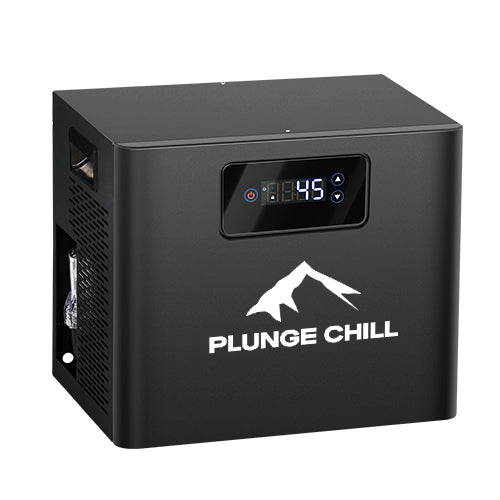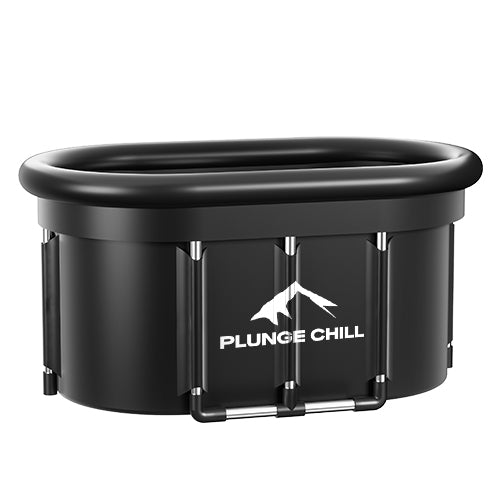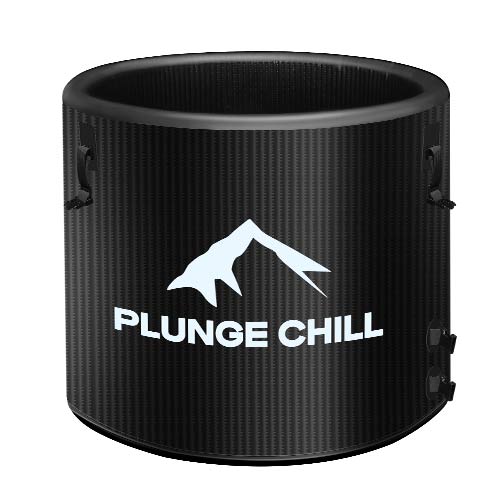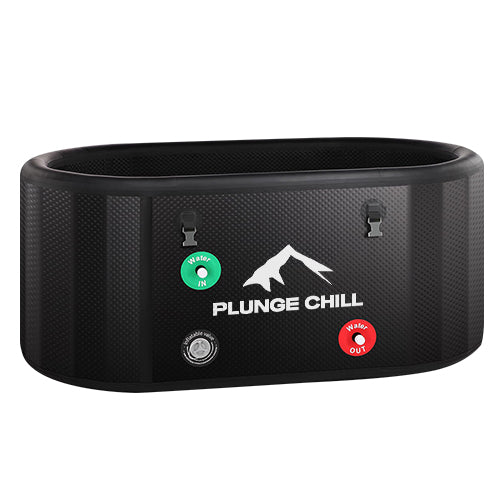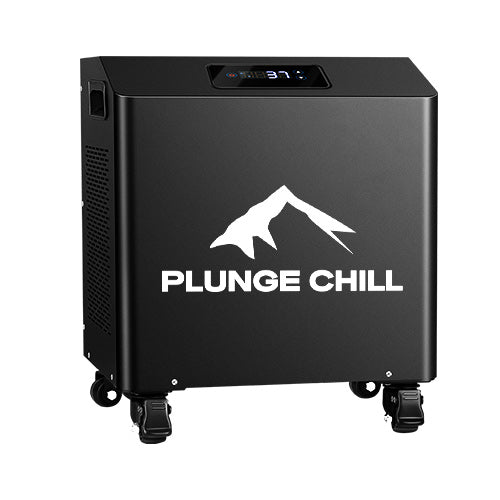Finding the best ice bath temperature helps with recovery. Experts say 48-59°F (9-15°C) works well. It lowers swelling and soothes sore muscles. Studies in Sports Sciences for Health show that staying in this range for 10-15 minutes helps a lot. Research also says cold water below 59°F reduces muscle pain. Athletes have used this range for years to recover quickly and feel good after hard workouts.
Key Takeaways
The best ice bath temperature is between 48°F and 59°F. This helps reduce sore muscles and speeds up healing.
Stay in the ice bath for 10-15 minutes for full benefits. If you're new, start with 5-10 minutes to get used to it.
Take ice baths 1-3 times a week to lower swelling and improve blood flow. Change how often based on your workouts and recovery needs.
Always check the water temperature with a thermometer before getting in. This keeps it safe and helpful for recovery.
Pay attention to how you feel during ice baths. If you feel numb or dizzy, get out right away and warm up to stay safe.
Benefits of Ice Baths
Reducing Inflammation and Muscle Soreness
Ice baths are great for lowering swelling and sore muscles. Sitting in cold water makes blood vessels tighten. This helps reduce swelling in tired muscles. It also lowersdelayed-onset muscle soreness (DOMS), so you recover faster after hard workouts.
Research shows cold water helps with recovery and eases muscle pain.
Ice baths shorten recovery time, letting you train again sooner.
| Time Frame | SMD (Effect Size) | 95% CI (Range) |
| 24 hours | -0.55 | -0.84 to -0.27 |
| 48 hours | -0.66 | -0.97 to -0.35 |
| 72 hours | -0.93 | -1.36 to -0.51 |
| 96 hours | -0.58 | -1.00 to -0.16 |
This table shows how ice baths ease soreness over time. Using the right ice bath temperature boosts these benefits.
Enhancing Circulation and Recovery
Cold water improves blood flow, which helps your body heal. When you sit in an ice bath, the cold pushes blood from your skin to your core. This clears waste like lactic acid and helps muscles repair.
-
Ice baths ease soreness and swelling, speeding up recovery.
-
Cold water improves blood flow, helping muscles heal faster.
-
Cyclists felt less tired after cold water compared to resting.
-
Leg soreness dropped a lot with cold water use.
-
Heart recovery improved after cold water exposure.
These results show ice baths help you recover better, especially after tough workouts.
Supporting Mental Resilience and Stress Reduction
Ice baths help your mind, not just your body. Cold water teaches you to stay calm under stress. Studies show cortisol, a stress hormone, drops after cold exposure.
For example, people had lower cortisol after 15 minutes in 50°F water. The effect lasted up to three hours. Doing this often, like winter swimming, lowered cortisol even more. This means ice baths can reduce stress and make you mentally stronger.
Tip: Begin with short sessions at a comfy ice bath temperature to build confidence.
Determining the Best Ice Bath Temperature
Matching Temperature to Recovery Goals
Muscle recovery and soreness relief
To help sore muscles and recover faster, use ice baths between 50°F (10°C) and 59°F (15°C). This range reduces swelling and eases pain after hard workouts or sports. Studies say staying in this range for 8-15 minutes works best. For example, cold water at 50°F improves heart recovery and relaxes muscles, as shown below:
| Condition | HRR60s (beats/min) | Ln rMSSD (ms) |
| CON | 30 ± 9 | 1.98 ± 0.74 |
| TWI | 43 ± 10 (P=0.003) | 2.01 ± 0.61 |
| CWI | 40 ± 13 (P=0.017) | 2.32 ± 0.67 (P=0.05) |
This table shows how the right temperature helps recovery.
General health and mental well-being
For better health and stronger mental focus, try ice baths around 59°F (15°C). Regular use at this temperature lowers stress and boosts blood flow. Cold water also trains your body to handle discomfort, making you mentally tougher over time.

Building Cold Tolerance
Slowly adjusting to colder water
Your body needs time to get used to cold water. Start with short sessions at 59°F (15°C). As you adjust, lower the temperature and stay in longer. This helps you avoid shock and build strength.
Knowing your limits
Pay attention to how you feel in the ice bath. Stop if you feel numb, dizzy, or very uncomfortable. A method called Time Under Temperature tracks how long you can stay in cold water safely. This helps you avoid staying in too long.
Thinking About Health Conditions
Existing medical issues
If you have heart problems or high blood pressure, be careful with ice baths. Cold water can tighten veins and slow blood flow, which may cause serious problems like a heart attack or stroke.
Talking to a doctor
Before starting ice baths, ask your doctor for advice. They can tell you how to stay safe and avoid risks like getting too cold or other health issues.
Practical Guide to Ice Bath Safety
Getting Your Ice Bath Ready
Setting up and checking the temperature
To make an ice bath, fill a tub with cold water. Add 1-3 bags of ice until the water is 50°F (10°C) to 59°F (15°C). Use a thermometer to check the temperature. This keeps it in the right range for recovery. Have a timer ready to track your time and avoid staying too long.
Before getting in, take deep breaths for a few minutes. This helps your body handle the cold better. Step into the bath slowly to let your body adjust. Breathe steadily while soaking to stay calm and safe.
Making sure it’s safe and comfortable
Safety is very important. Use a sturdy tub to avoid slipping. Keep a towel and warm clothes close by for after the bath. Stay focused and have someone nearby in case you need help. If you have health problems, ask a doctor before starting.
Tip: Start with warmer water and shorter times to build tolerance.
Time and Frequency Tips
How long to stay in the bath
For recovery, stay in the ice bath for 10-15 minutes. If you’re new, start with 5-10 minutes. Don’t go over 15 minutes to avoid getting too cold.
| Time (minutes) | Purpose |
| 10 to 15 | Recovery |
| 5 to 10 | Beginners |
How often to use ice baths
Using ice baths 1-3 times a week works for most people. This helps reduce swelling and improve blood flow without overdoing it. Adjust how often based on your workouts and recovery needs.
| Time (minutes) | Times per week |
| 10 to 20 | 1 to 3 |
| 10 to 15 | 1 to 3 |
Staying Safe
Avoiding too much cold exposure
Staying in too long can make you too cold. Limit your time to 15 minutes and watch your body temperature. Don’t use ice baths if you’re pregnant, have open cuts, or are using drugs or alcohol.
Knowing when to stop
Look out for signs like feeling numb, dizzy, or shivering. If this happens, get out of the bath and warm up right away. Always have someone nearby to help if needed.
Note: People with heart problems should be extra careful because cold can stress the heart.
Optimizing Your Ice Bath Routine
Trying Out the Right Temperature and Time
Finding the best temperature and time is important for ice baths. Studies show that keeping the water between 50°F (10°C) and 59°F (15°C) for 11 to 15 minutes works best. This range cools muscles, slows blood flow, and reduces swelling. Following these steps can ease soreness and help muscles heal.
If you're new, start with warmer water. Slowly make it colder as your body gets used to it. Use a timer to keep track of how long you stay in. Research by Machado et al. (2016) shows that sticking to this time range improves recovery. This way, you can get used to the cold without overdoing it.
Tip: Always check the water temperature with a thermometer to stay safe.
Mixing Ice Baths with Other Recovery Methods
Combining ice baths with other recovery methods can make them more effective. Light stretching or easy exercises improve blood flow and remove waste from muscles. Physical therapy can also help with specific recovery needs. Therapists can create plans that mix cold baths with special exercises.
Research shows ice baths and light exercise both reduce swelling. Using them together may give better results. This mix helps muscles heal and lowers soreness, making it great for athletes and fitness fans.
Note: Pick recovery methods that match your goals and what you like.
Watching Progress and Changing Over Time
Keeping track of your progress is key to improving your ice bath routine. Start with short times and add 15 seconds each session. This helps your body adjust to the cold slowly. "Time Under Temperature" is a helpful way to measure how long you stay in cold water. It shows how much your cold tolerance improves.
Begin with warmer water and lower the temperature as you get stronger. Notice how you feel during and after each bath. Change your routine based on your comfort and recovery needs. This step-by-step method keeps you safe while reaching your recovery goal
Reminder: Write down your ice bath temperature, time, and how you feel after. This helps you see patterns and make better changes.
The best ice bath temperature is between 48°F and 59°F. This range helps muscles heal, reduces soreness, and boosts mental strength. Research shows cold water in this range lowers muscle damage signs like creatine kinase and lactate dehydrogenase. It also helps athletes recover strength and feel less pain. Adjust your routine to match your goals and comfort. Begin with short sessions, pay attention to your body, and ask a doctor if unsure. When done right, ice baths can greatly improve recovery and health.
